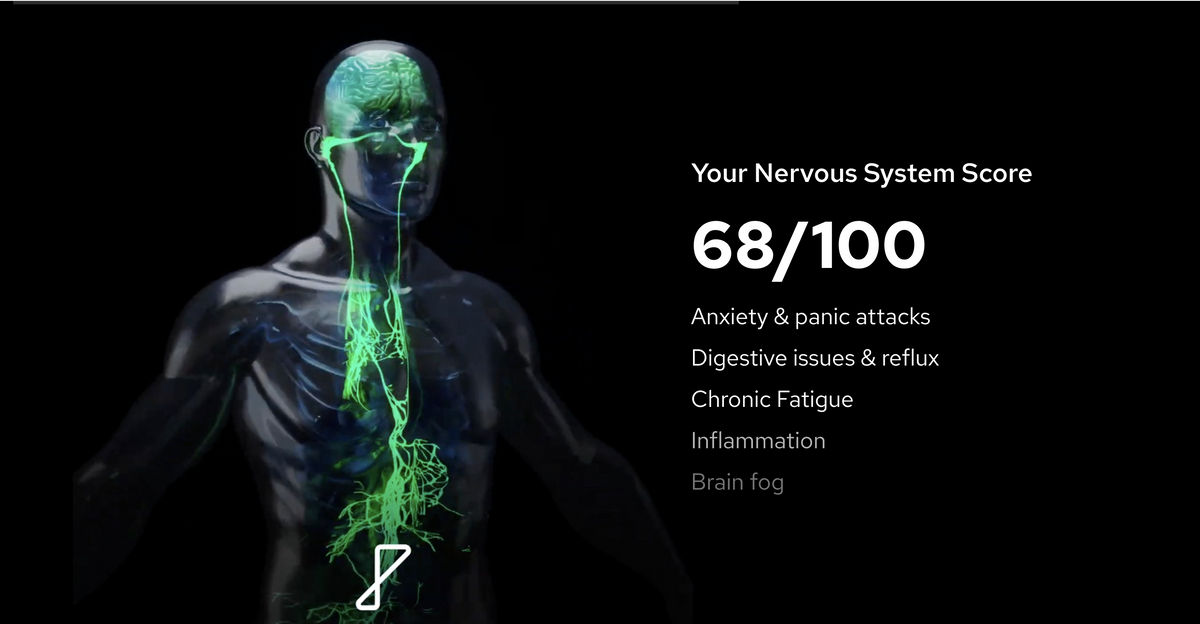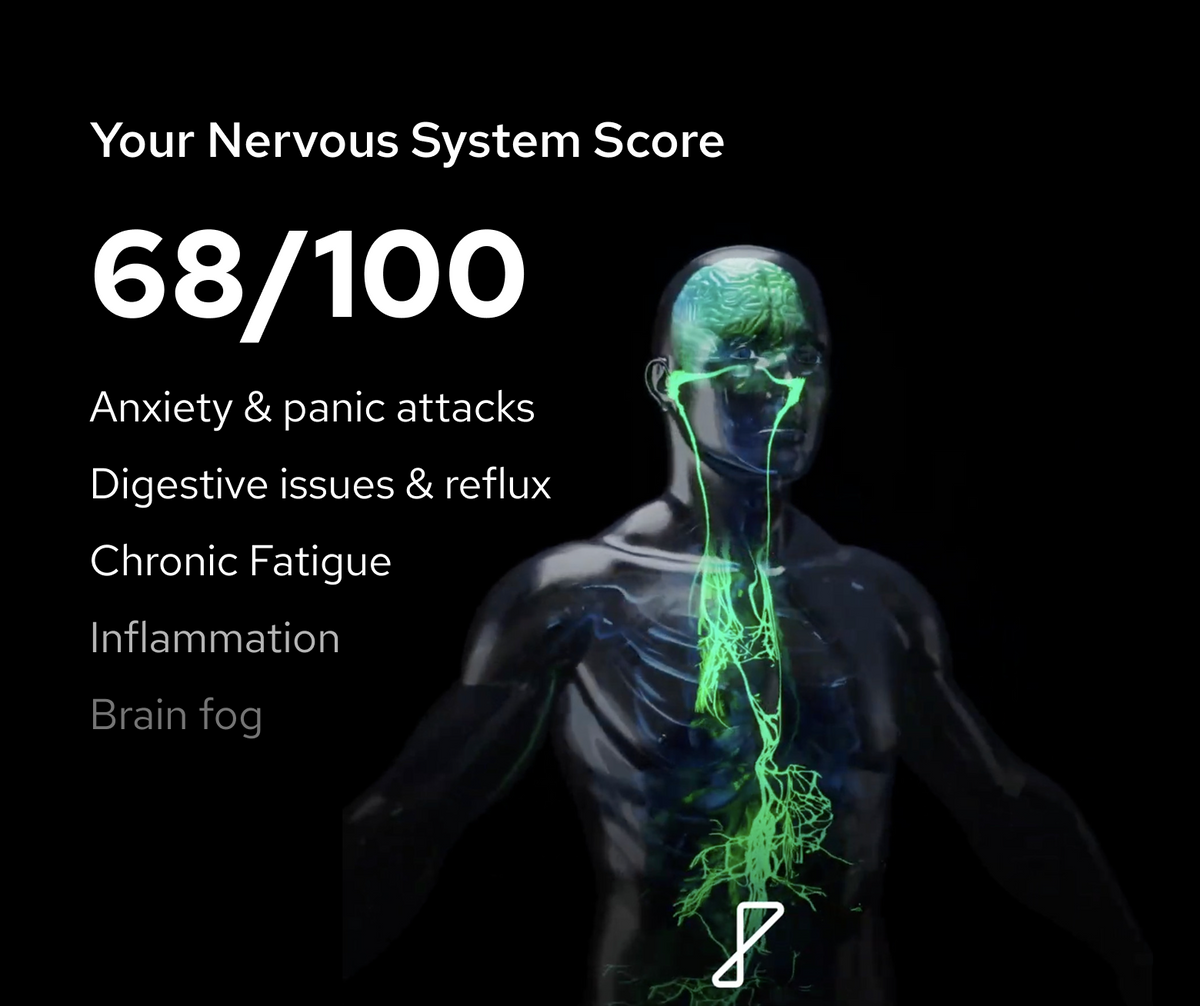Autonomic tone and heart rate variability are important indicators of your health - here is why
 |
Dr Elisabetta Burchi, MD, MBA Clinical Psychiatrist Translational Research Lead at Parasym. |
Individuals need to be flexible in order to adapt and thrive in different environmental circumstances. As behavioral psychological flexibility is considered one of the most adaptive personality traits, functional variability is a key feature of healthy biological systems. To adapt to changing surroundings and maintain physiological homeostasis, healthy biological systems exhibit functional variability, such as complex and non linear patterns of activity.
Indeed, while it may seem counterintuitive, a healthy heart is nothing like a metronome. A heart in good shape displays what is called “heart rate variability” (HRV), a fluctuation in the time intervals between adjacent heartbeats. HRV allows the cardiovascular system to react to sudden physical and psychological challenges to homeostasis with rapid functional adjustments.
In recent decades, there has been an increasing interest around HRV and its association with cardiovascular fitness. Numerous studies found HRV to be a sensitive predictor of higher risk of adverse cardiovascular events and all-cause death. This is biologically explained by the fact that HRV is a correlative marker of the complex interaction between the nervous system and the heart rhythm and can sensitively uncover the different physiological processes that underpin cardiovascular resilience.
HRV indexes neurocardiac function and ultimately reflects the autonomic nervous system balance which results from the interaction of interdependent regulatory systems operating on different time scales. This complex system sees the balance between parasympathetic and sympathetic tone, the variation in blood pressure, the emotional, and the metabolic state which influence HRV over a period of minutes to hours but also circadian rhythms which operate on a 24-hours time frame.
But what is an optimal level of HRV ?
As mentioned earlier, healthy biological systems exhibit spatial and temporal complexity. Diseases can involve either a loss or increase in HRV complexity causing HRV measurements to either decrease or increase.
However, excluding some cardiac conduction abnormalities that can substantially elevate HRV and can be diagnosed through an electrocardiographic assessment, the majority of chronic degenerative diseases affecting cardiovascular fitness see a reduction of autonomic modulation of heart rate variability.
Notably, heart failure with preserved ejection fraction (HFpEF) is associated with marked autonomic dysfunction, increased activity of the sympathetic nervous system (SNS), and decreased activity of the parasympathetic nervous system (PNS).
Conversely, parasympathetic withdrawal and sympathetic overactivity with consequent reduction in HRV have also been associated with clinical depression and psychological stress, well-established risk factors for cardiovascular diseases.
The complex relationship between SNS and PNS nerve activity hence appears to be key to a healthy functioning heart. Recent studies suggest that HRV is not just a correlative marker of the autonomic function but could also be modulated to improve clinical outcomes.
Regular aerobic exercise represents an important therapeutic tool capable of promoting positive adjustments in cardiac autonomic modulation, either reducing sympathetic modulatory influence and/or increasing vagal modulatory influence on the heart, hence increasing HRV.
HRV-biofeedback, a slow breathing technique, has also been shown to influence cardiovascular outcomes in patients with various chronic pathological conditions, including hypertension, asthma, depression, anxiety, and sleep disorders through a similar remodulation of the autonomic nervous system activity.
Importantly, a rebalance in the autonomic system with restored levels of resting vagally-mediated HRV has been associated with better cardiovascular outcomes and linked to a better performance of executive functions like attention and emotional processing by the prefrontal cortex.
How do I improve my HRV?
Alongside such behavioral approaches, there are other non-invasive neuromodulatory techniques that can be used therapeutically to directly rebalance the function of the autonomic system: vagus nerve stimulation (VNS) exerts prominent anti-adrenergic and anti-inflammatory effects and can be accomplished transcutaneously by stimulating the auricular branch of the vagus nerve.
Parasym’s non-invasive neuromodulation technology applying low-level transcutaneous VNS (LLTS) has been studied in the treatment of Heart Failure. An early study applied transcutaneous stimulation of the auricular branch of the right vagus nerve at the tragus and showed an acute improvement in Left Ventricular (LV) longitudinal mechanics associated with a favorable change in sympathovagal balance, suggesting that patients with worse longitudinal cardiac function, such as those with Heart Failure, would derive even more benefit from this treatment modality.
Recently, a randomized clinical trial using Parasym’s neuromodulation technology has confirmed these findings and shown significant improvements in cardiac mechanics, reductions in inflammatory cytokines and improvements in quality of life in patients with Heart Failure suggesting that Parasym’s non-invasive vagal neuromodulation could be a viable, affordable, accessible and effective therapeutic tool for heart health.
Conclusion:
HRV is a useful parameter that can guide the assessment of pathological conditions as well as therapeutic interventions.
Aerobic exercise, breathing techniques, and targeted non-invasive neuromodulation interventions are viable, affordable, accessible and effective therapeutic tools to influence heart health.
----
Schiweck C, Piette D, Berckmans D, Claes S, Vrieze E. Heart rate and high frequency heart rate variability during stress as biomarker for clinical depression. A systematic review. Psychol Med. 2019 Jan;49(2):200-211. doi: 10.1017/S0033291718001988. Epub 2018 Aug 23. PMID: 30134999.
Tran N, Asad Z, Elkholey K, Scherlag BJ, Po SS, Stavrakis S. Autonomic Neuromodulation Acutely Ameliorates Left Ventricular Strain in Humans. J Cardiovasc Transl Res. 2019 Jun;12(3):221-230. doi: 10.1007/s12265-018-9853-6. Epub 2018 Dec 17. PMID: 30560316; PMCID: PMC6579714.
Burlacu, A.; Brinza, C.; Popa, I.V.; Covic, A.; Floria, M. Influencing Cardiovascular Outcomes through Heart RateVariability Modulation: A Systematic Review. Diagnostics 2021, 11, 2198. https:// doi.org/10.3390/diagnostics11122198
Shaffer F, Ginsberg JP. An Overview of Heart Rate Variability Metrics and Norms. Front Public Health. 2017;5:258. Published 2017 Sep 28. doi:10.3389/fpubh.2017.00258



